What Is Organic Traffic?
Organic traffic (or organic search traffic) is the traffic that visits a website after making a search and clicking on an organic search result.
The other side of search engine traffic is paid traffic (paid search traffic), which are visits that come from clicking on pay-per-click (PPC) advertisements on the results page.
All traffic from search engines can be either categorized as organic or paid.
You can drive more organic website traffic by ranking your site content on search engine results pages (SERPs) via search engine optimization (SEO).
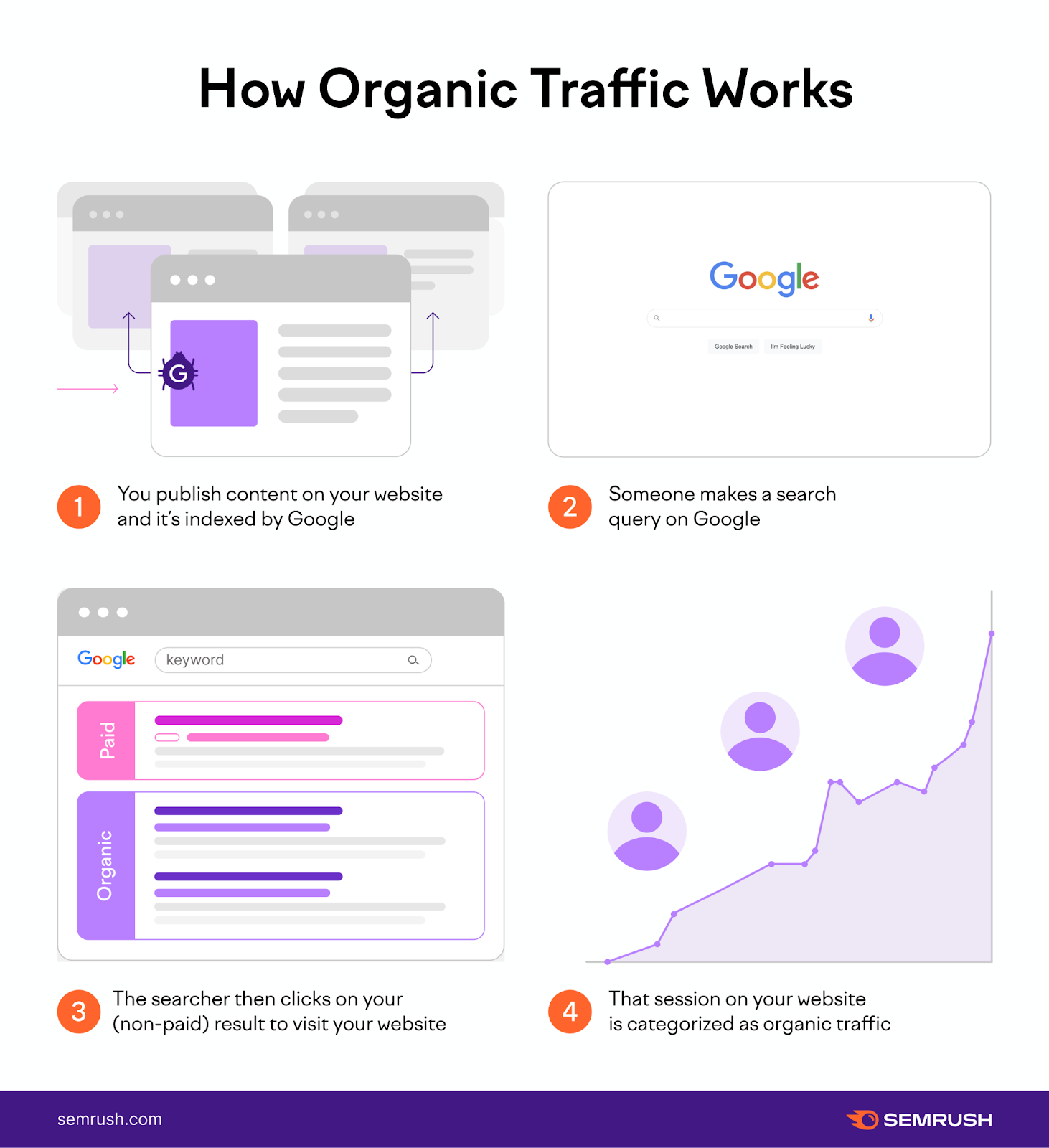
Other than organic and paid search traffic, websites can also attract…
- Direct traffic: traffic that comes from direct sources like entering the domain name in the browser’s search bar.
- Referral traffic: traffic that comes from hyperlinks on other websites.
- Organic social traffic: traffic that comes from organic (unpaid) posts on social media sites.
- Paid social traffic: traffic that comes from paid posts on social media sites.
Why Is Organic Traffic Important?
Organic traffic is a great way to reach new customers online. It’s scalable, it builds trust in your brand, and best of all, it’s free.
All it takes is a commitment to SEO.
Some of the best benefits of organic traffic include:
- It’s free
- You can reach people that have never heard of your brand before
- You can bring visitors with relevant and specific intent to your site
- You can reach people worldwide
- It can be targeted and scaled with a content/SEO strategy
- It can build your credibility
- The search engine market is growing
However, organic traffic also has its downsides:
- Organic traffic growth can be slow compared to paid search traffic
- Not every search ends in a click (zero-click searches)
- An SEO consultation or SEO service provider can be an initial investment
How to Check Your Website’s Organic Traffic
If you are a website owner, you can view organic traffic statistics about your site for free with a Google Analytics or Google Search Console account.
Since Google Analytics 4 is currently the default option for new websites and some existing websites still use Universal Analytics, here are instructions for both.
Check Organic Traffic on Google Analytics 360 (Universal Analytics)
- Go to your Google Analytics 360 account for your website
- Go to Acquisition–>All Traffic–>Channels–>Organic Search
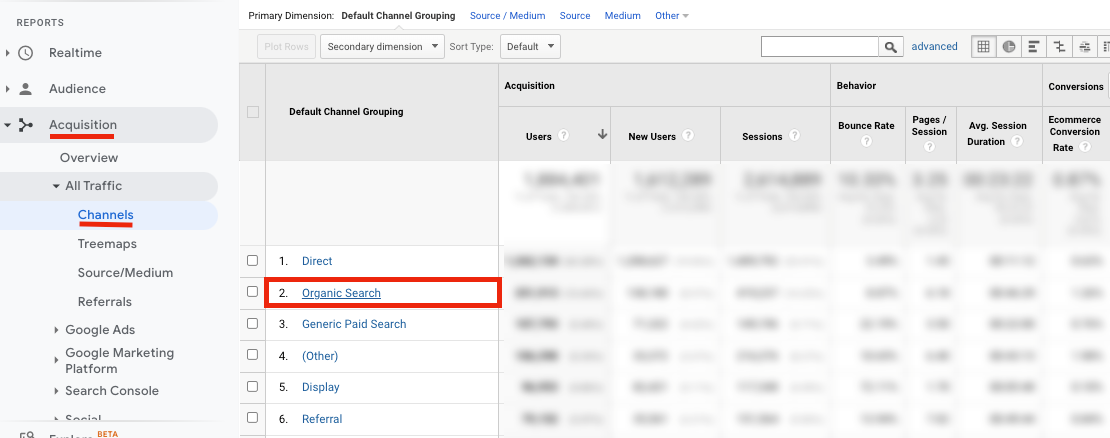
Check Organic Traffic on Google Analytics 4
- Create a free Google Analytics account for your website or go to your GA4 account
- Go to Acquisition–>Traffic Acquisition–>Organic Search
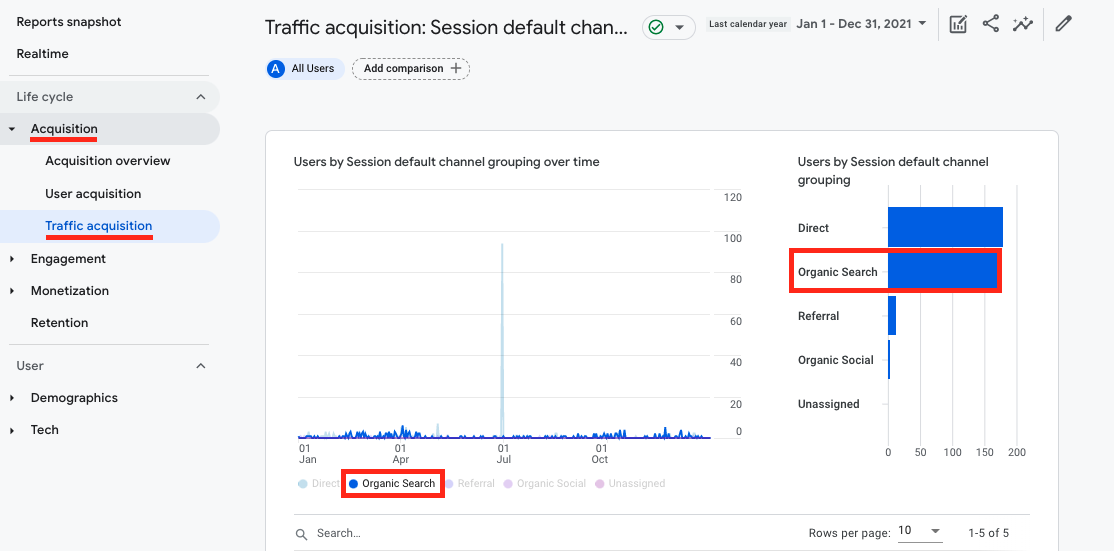
Check Organic Traffic on Google Search Console
- Create a free Google Search Console account for your website.
- Open Google Search Console and view “clicks” in the Performance report.
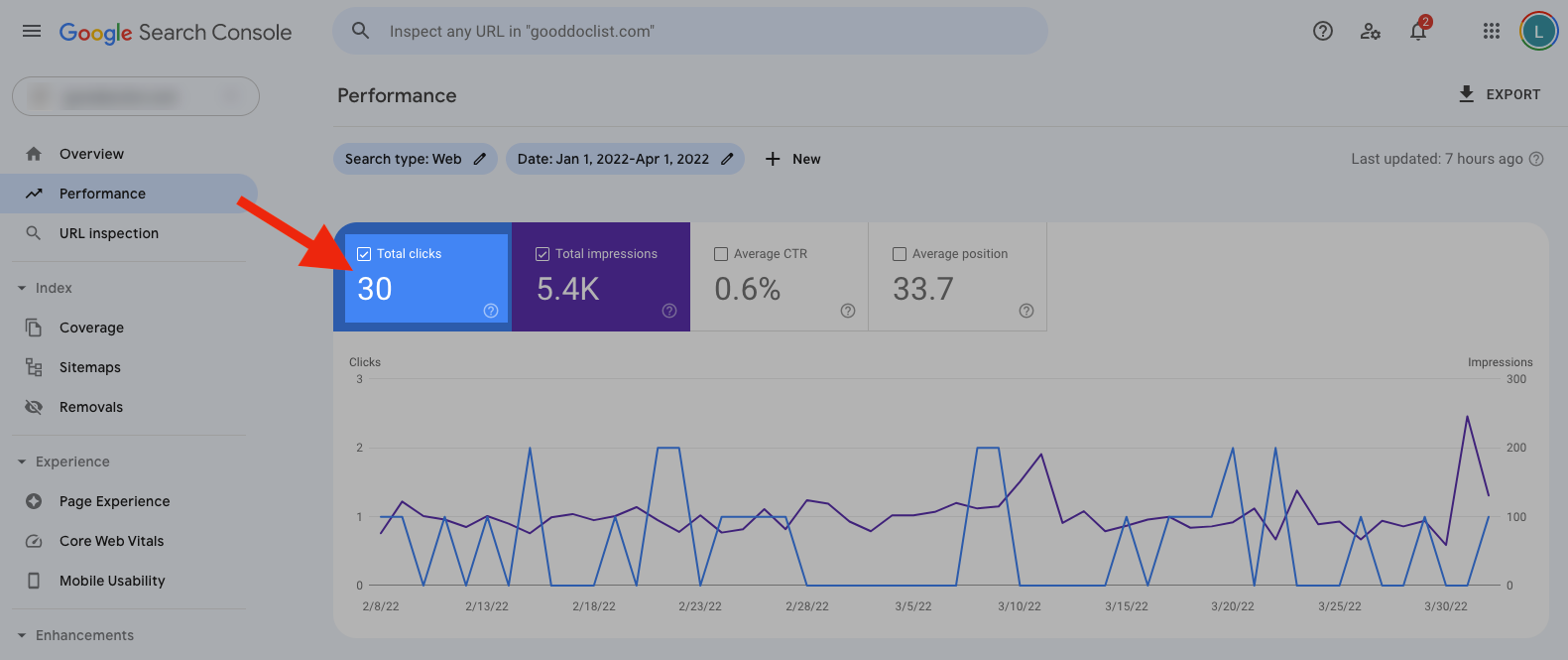
You can also check your site or a competitor’s organic traffic estimations with Semrush.
How to Check Any Website’s Organic Traffic
Semrush allows you to uncover any website’s organic keyword rankings and estimate their organic traffic based on those rankings.
Just go to the Organic Research report and enter a competitor’s domain name.
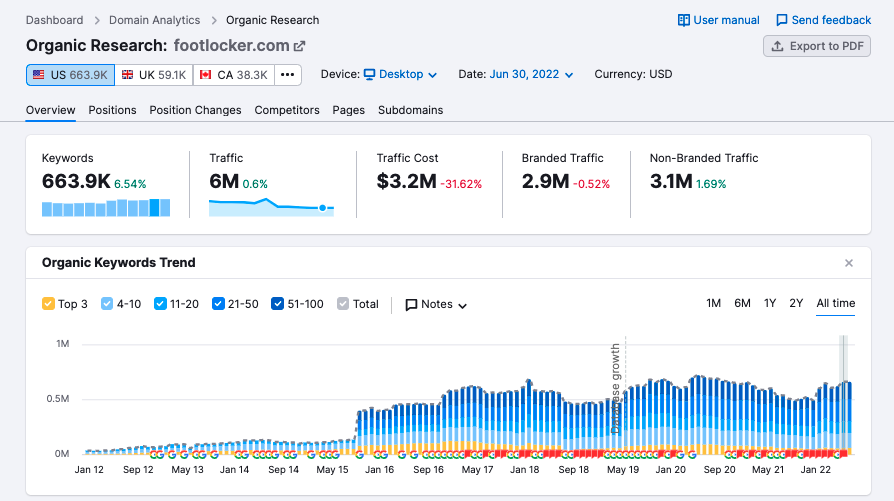
The Keywords number at the top of this report tells you how many organic keyword rankings the site holds in the top 100 results on Google.
The Traffic number at the top of this report estimates how many monthly visits (organic traffic ) those keywords bring to the site.
Organic vs. Paid Traffic Value
When you look at the cost of paid search campaigns, the value of organic traffic becomes more clear.
Unlike a pay-per-click (PPC) campaign, you don’t have to pay for any single click on one of your organic search results. In that sense, organic traffic is free.
For some highly valued keywords, the cost per click (CPC) can be hundreds of dollars.
Are you wondering why anyone in their right mind would pay over $100 just for one person to click on an ad?
Well, that’s where the searcher’s intent and the business’ value come into play.
If you can look at a searcher’s query and determine that they’re looking for something very specific, and something very expensive that your business offers, then paying $100 might be worth it to bring in new leads.
Let’s look at some examples:
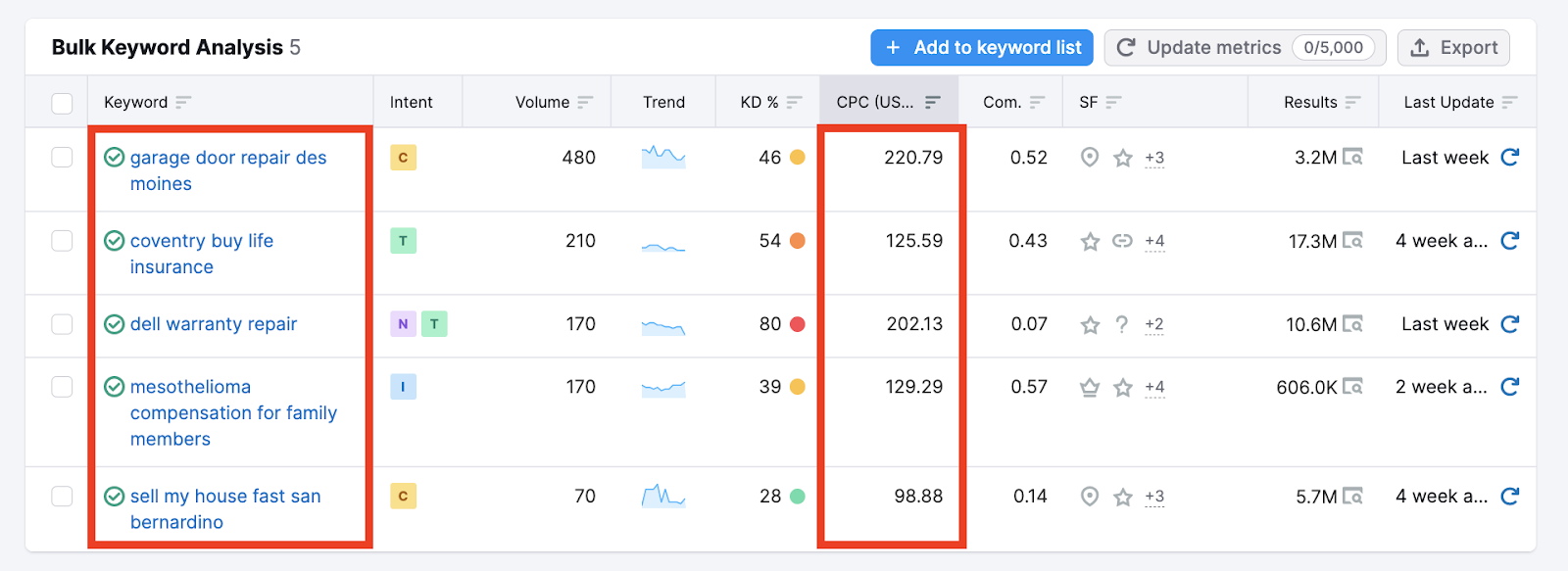
We can tell that these queries have high intent and are related to expensive services. So, it could be cost-effective to pay for those clicks.
Now, if you were able to get your garage door repair site organically ranking at the top of the SERP for “garage door repair des moines,” you’d be getting that $220 value for free with every organic click.
In fact, you can estimate the total value of any website’s organic traffic in Semrush’s Organic Research report.
Just enter the domain and look for Traffic Cost.
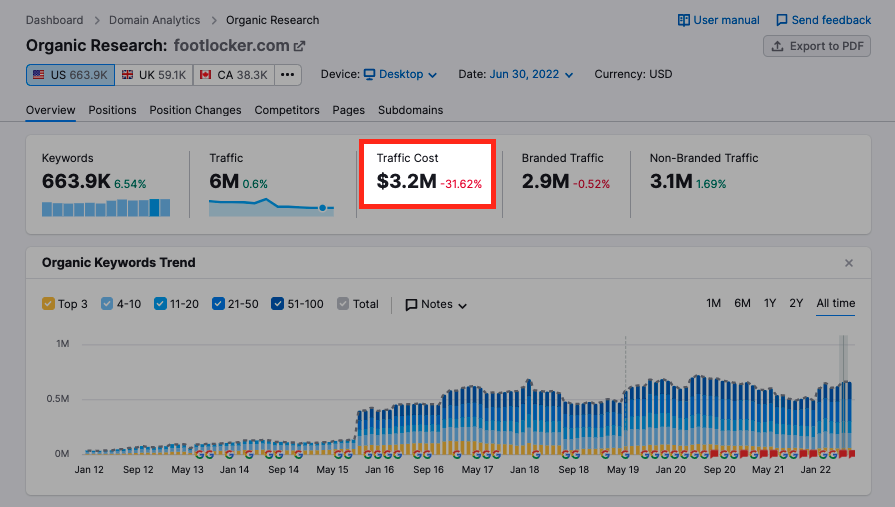
This number tells us that it would cost roughly $3.2M to replicate footlocker.com’s June 2022 organic traffic by paying for the same number of clicks from those keywords via Google Ads.
How SEO Drives Organic Traffic
SEO is the process of helping a website achieve more organic traffic.
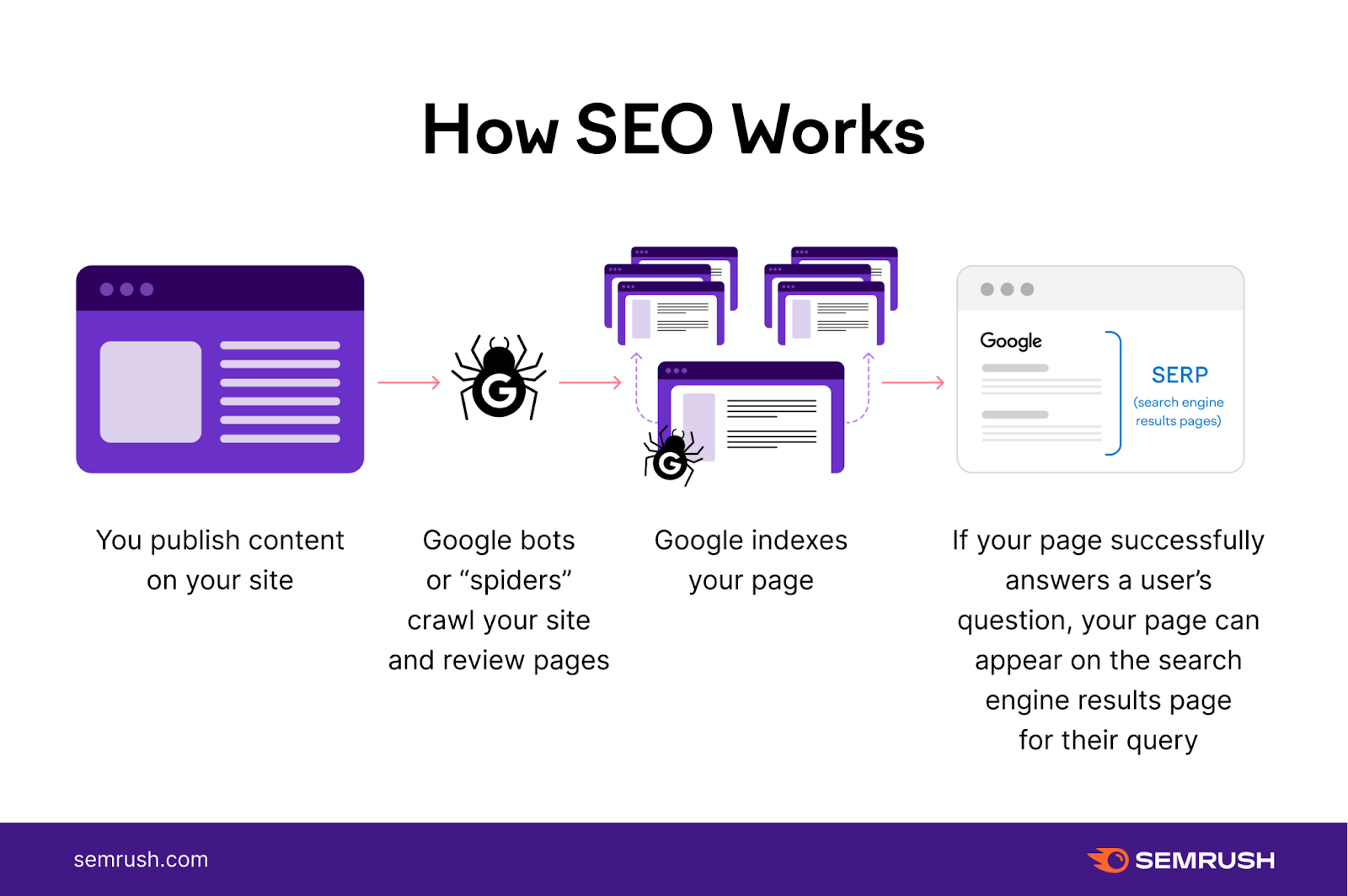
In order to get organic traffic, your site needs to:
- Have content
- Get crawled and indexed by Google
- Be visible in the search results so people can click on your page
Those are just the basics.
But step 3 is really where your SEO strategy comes in. If you want to be visible, you need to find a way to outrank what’s already ranking on search engines.
Depending on the number of websites in your niche, it may be hard to bring in any organic traffic without implementing SEO best practices.
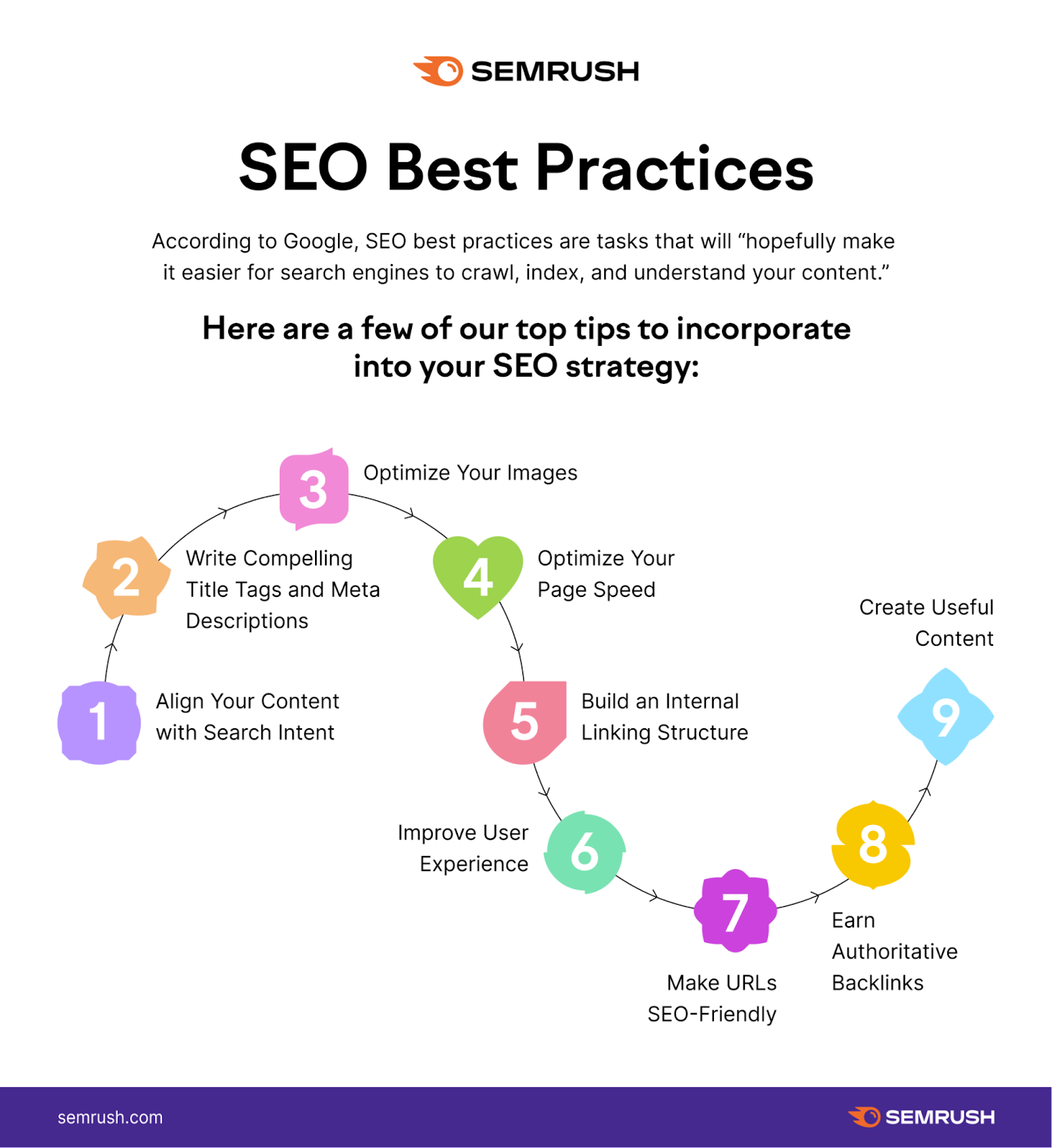
When you use SEO to target the search terms that people in your audience use on Google, you can reach them the moment they’re looking for something specific, without paying for every click.
Organic Traffic Case Studies
Here’s a few success stories if you are looking for inspiration:
Case Study 1: Arkadium, a gaming company, saw a huge increase in organic traffic by implementing an SEO strategy that targeted better keywords for its business.

Case Study 2: Voe Tranquilo, a company that helps people with air transport issues, increased organic traffic by 588% and cut its customer acquisition cost (CAC) in half by producing high-quality content.
Case Study 3: Just Paddles, an online sports retailer, launched a new website and grew organic revenue by 124% in 9 months with its SEO plan.
How to Get More SEO Organic Traffic: 3 Steps
Here are three steps you can take today to get started on your organic traffic journey.
- Set up your Google Business Profile
- Create your first SEO strategy
- Audit your website for any issues
Step 1. Set up Your Google Business Profile
A Google Business Profile is what allows your business to show up in Google Maps and collect reviews.
If you operate a business that interacts with customers in person, it will benefit your local SEO to set this up.
If your business operates online-only or is a virtual business, then you can skip this step.
Setting up Google Business Profile doesn’t take long and you can follow the steps here to get started.
Once you do, you’ll be able to bring in local customers via search with your business listing.
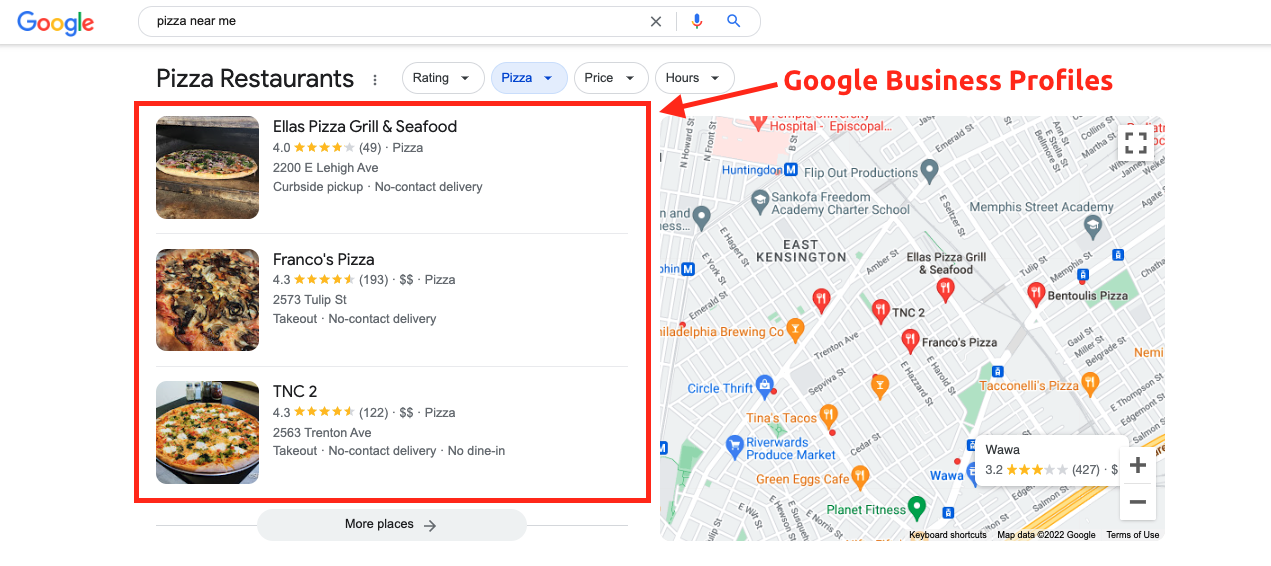
Step 2. Create Your SEO Plan
Your SEO plan will guide you on your journey to get more organic traffic.
To get the most ROI (return on investment) out of your SEO, you’ll want to identify which pages on your site contribute the most to your bottom line and focus on optimizing those pages. Some call these your “money pages.”
This could be a page with your contact form, a button to purchase or download your product, a sign-up form, etc.
Then, as you bring in organic traffic to your site, you’ll need to direct this traffic to your money pages that can convert visitors into sales. Once you do, you’ll see the ROI of SEO.
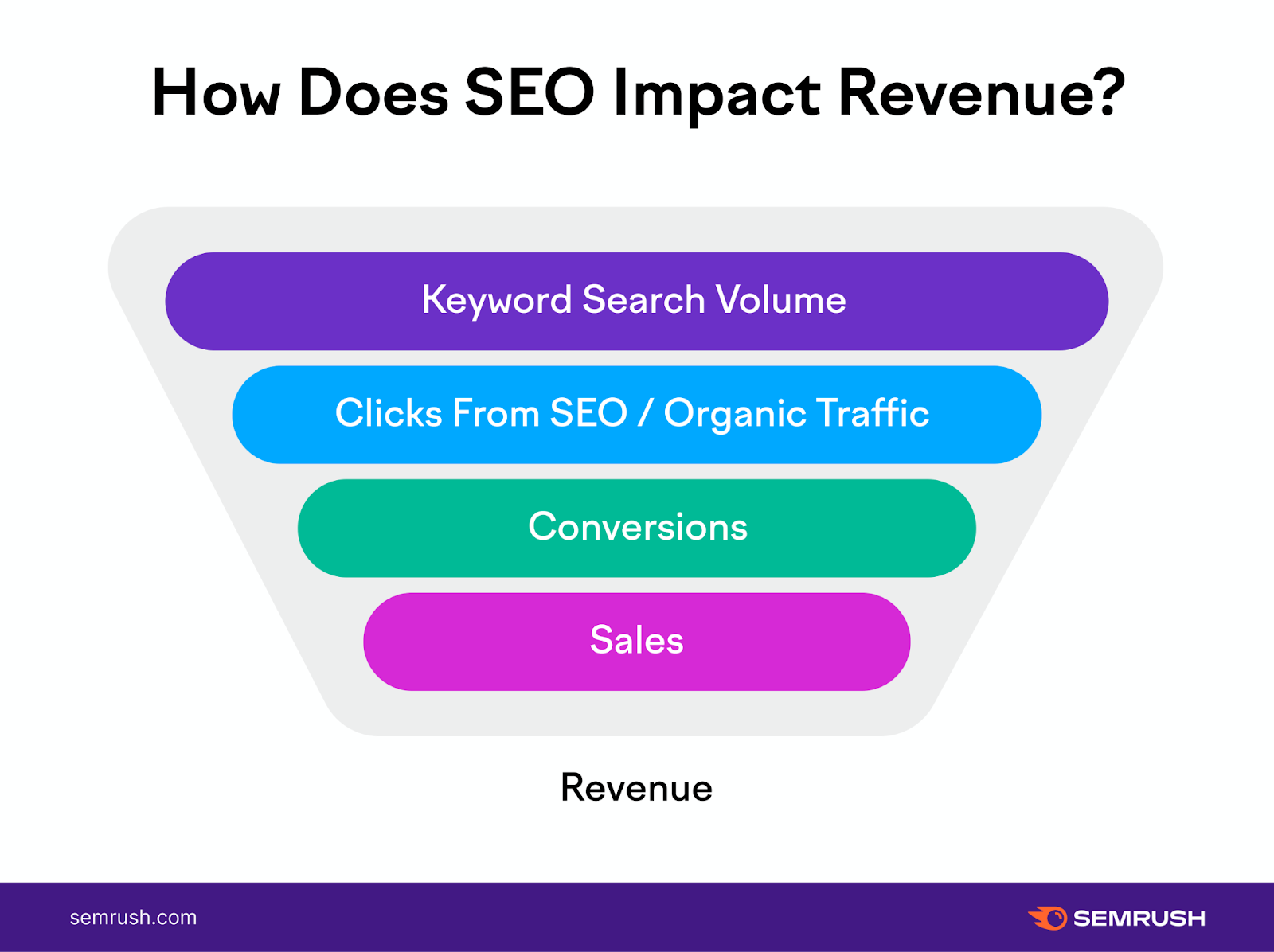
Every site is unique and will have its own challenges, but there are some basics you can follow to get started:
- Identify the money pages on your site that contribute the most to your business goals
- Set up Google Analytics to track conversions from these pages (payments, sign-ups, downloads, contact form submissions, phone calls, etc.)
- Benchmark your current organic traffic to your close competitors to see how much you could improve and gather ideas from their websites
- Conduct keyword research to build a target keyword list and identify topic clusters to talk about on your website
- Plan to create optimized content around those topics and target keywords
- Plan to promote and distribute any new content you create (via social media, email lists, etc.)
- Set up keyword tracking so you know when your SEO efforts are paying off and your site becomes visible for your target keywords
Some tips:
- When doing keyword research, look for low-competition keywords to target early on. These can be easier to rank for so you can get your SEO rankings up and running faster.
- When you add content to your website, use plenty of internal links to direct visitors to your money pages.
- Optimize your page titles, descriptions, and URLs to target your keywords.
For an exhaustive to-do list, download our Ultimate SEO Checklist.
Step 3. Audit Your Website for Any Technical Issues
Lastly, if you want to achieve and keep your high rankings, Google needs to be able to quickly and easily crawl your website’s content.
This comes down to your site’s technical foundation, which you can check in a couple of minutes using Semrush’s Site Audit tool.
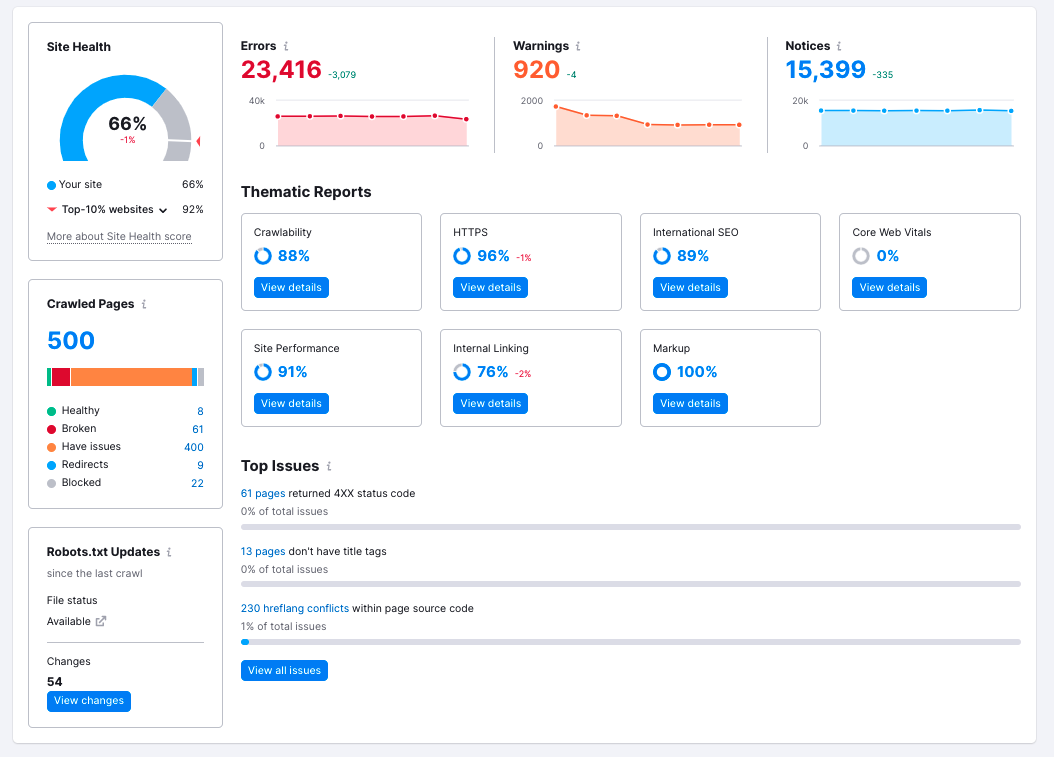
If there are any issues with your site, you can see exactly what they are and how bad they are with this tool.
You can discover any broken images, broken links, duplicate titles, and slow-loading pages this way. Plus, you’ll receive tips on how to fix them.
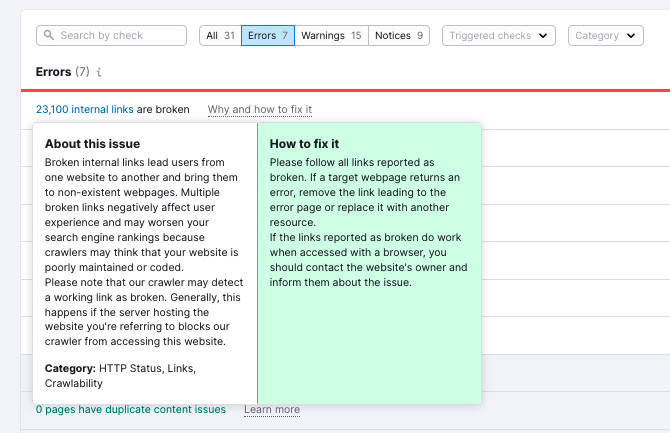
As you continue to execute your SEO strategy and build your site out with content, you’ll want to keep an eye on the technical side with a recurring audit.
If your site health score stays high, you’ll know you’re doing a good job. If the score starts to dip, and you see your organic traffic suffer as well, you should address the issues reported by the audit.
Conclusion
Organic traffic is a great channel for growing your online business, especially for long-term success.
Keep in mind that not all organic traffic is created equal–the traffic that goes to your “money” pages and directs visitors to convert on your site is more valuable for your business.
With a simple SEO plan, you can start your organic traffic growth journey today.
If you’re looking for some next steps, you can check out these helpful posts from our blog:

